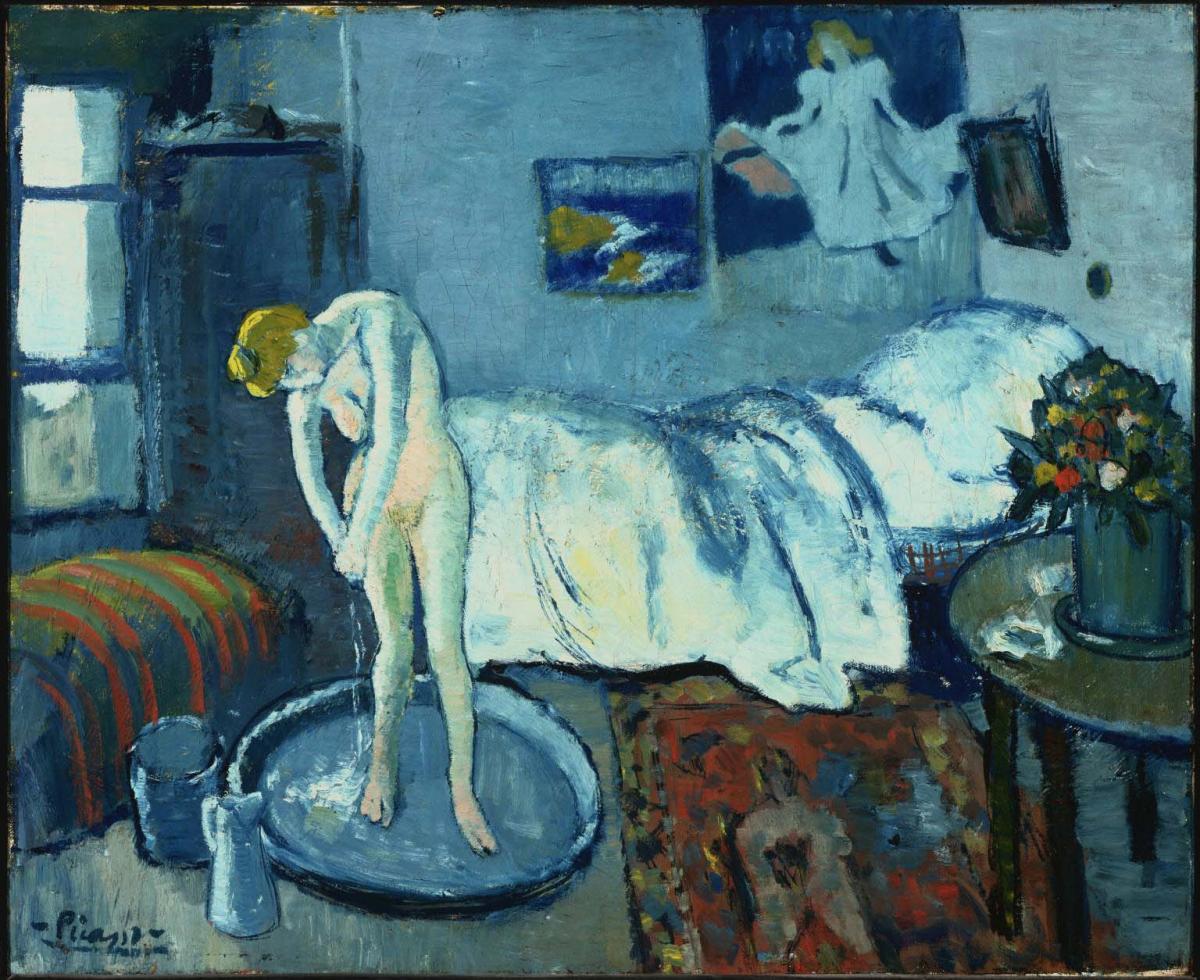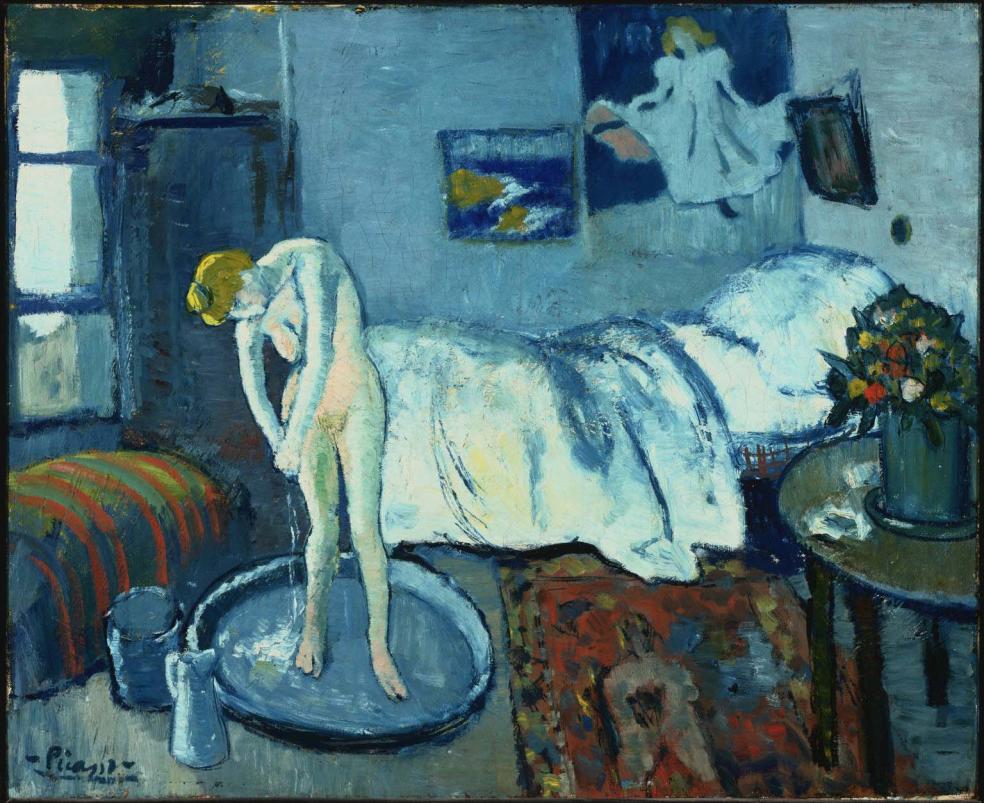The Blue Room
Pablo Picasso ( 1901 )

After training in Barcelona and Madrid, Pablo Picasso worked in Paris in late 1900, where he attended the World Exhibition and was inspired by Impressionist and Post-Impressionist art. During another Paris stay in 1901, Picasso captured the nighttime pleasures of Montmartre in paintings that were shown in his first solo exhibition at Vollard Gallery. The Blue Room was painted shortly thereafter. It is considered one of the earliest examples from Picasso’s Blue Period (1901–04), during which he concentrated on the pathos of the human figure in compositions colored by shades of blue. The work of Degas and Henri de Toulouse-Lautrec exerted a strong influence on this picture. Picasso’s studio on the boulevard de Clichy provided the setting for this scene of a nude bending over in the tub. Toulouse-Lautrec’s poster May Milton (1895) hangs on the wall as an homage; the artist had passed away in September 1901, shortly before Picasso created this work. Recent infrared reflectography indicates that this work was painted on top of an earlier portrait of a man. Reusing canvases was a common practice for Picasso at the time, since he was quite poor.
The Blue Room was the first work by Picasso to enter the collection. Duncan Phillips preferred Picasso’s early work because of its color and emotional resonance and expressed regret that Picasso did not paint for a longer period in this rich style.
